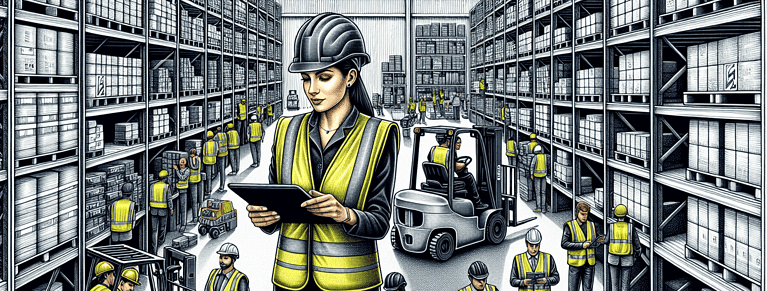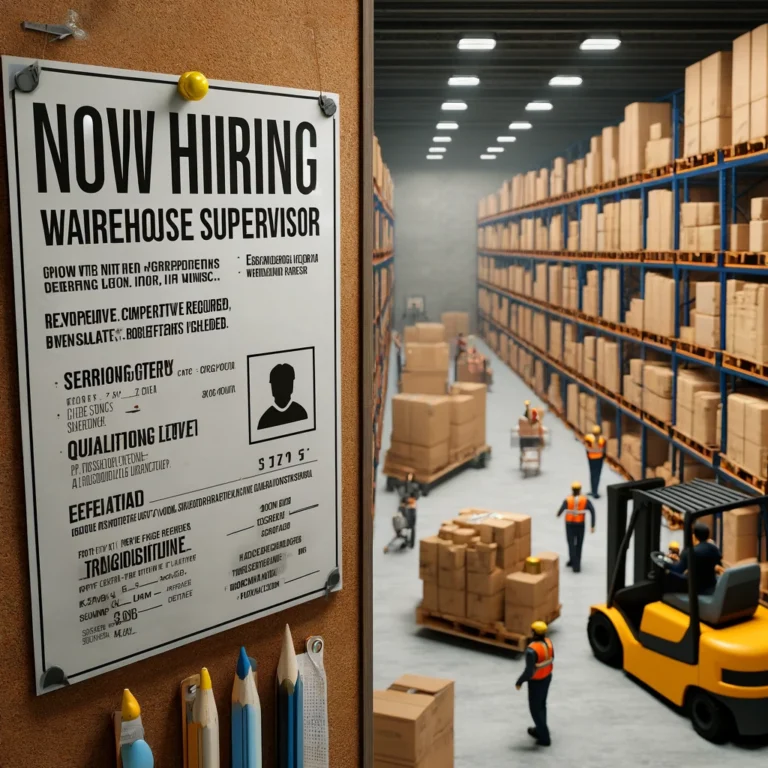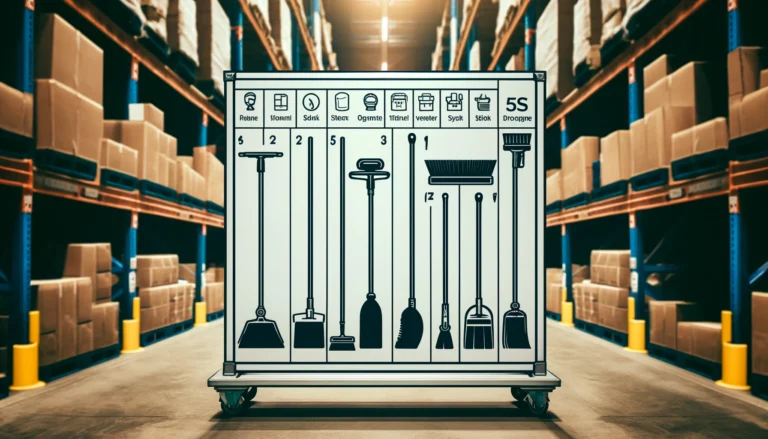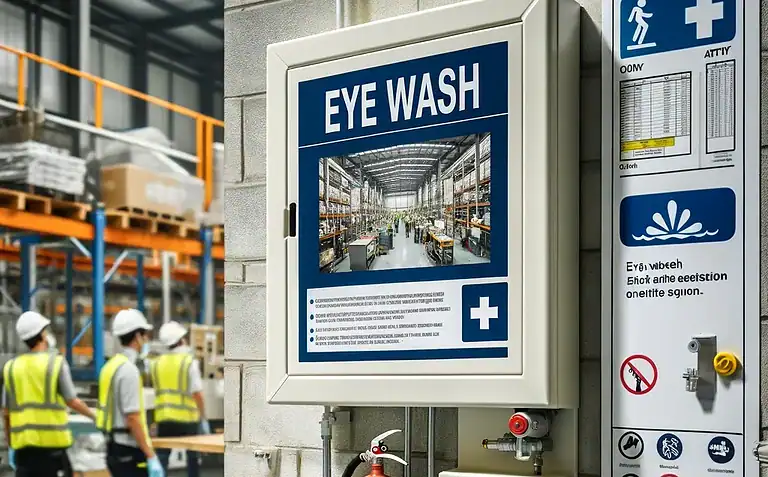Warehouse Safety Committee: Facts vs. Myths for 2025
Did you know that warehouses are among the top workplaces for injuries? From slips and falls to forklift mishaps, there are numerous potential hazards. Let’s talk about what gets results and what doesn’t through your safety committee.

Empowering employees and fostering a safety culture are essential for a successful warehouse operation. Establishing an effective safety committee is one powerful tool for this.
This committee, composed of management and front-line staff, plays a crucial role in identifying and mitigating risks, promoting safe work practices, and ultimately keeping everyone healthy and happy.
What Doesn’t Work: Pitfalls of a Weak Committee
Strong safety committees are the backbone of a proactive safety culture in warehouses. Unfortunately, some committees fall short of their potential, creating a false sense of security and failing to deliver real results.
Understanding and fulfilling safety committee responsibilities, such as hazard prevention, defining purpose, engaging members, and adhering to state-mandated duties, is crucial to avoid these pitfalls.
We have been involved in safety committee meetings for over 25 years. Here are some common pitfalls that can derail your committee’s effectiveness.
Missing Passion for Safety
The committee leader must be passionate about the well-being of all warehouse associates. It is a best practice for the leader to have in-depth knowledge of safety best practices, as their conduct speaks volumes.
Do they think, act, and promote business objectives with safety in mind?
Do they support changes where new safety challenges present themselves?
Are they willing to find solutions to these challenges?
Finally, do you trust this person to represent the views of the leadership and company?
Lack of Goals
Without a defined purpose and set of goals, the committee becomes aimless. Are they simply checking a box or actively working to identify hazards, promote safe work practices, and investigate incidents?
Without clear direction, the committee’s efforts will be scattered and ultimately ineffective. They need to understand their boundaries but also think outside the box when solving problems (and yes I said solve – they can help).
Pro Tip: I participated in several safety committees where the leader wanted to spend at least 75% of the meeting time educating the team members on safety topics.
While it is important to understand ‘safe lifting techniques’ and ‘what pee color means when you’re dehydrated,’ some people wanted to discuss their safety issues or concerns.
Operational safety is about culture – a culture of ownership. When you are an owner, you get to participate in meetings about the things you own. This was a missed opportunity that we eventually changed.
Unrepresentative Membership
A committee composed solely of management or only representing a single department creates a blind spot.
Management may not fully understand frontline workers’ day-to-day challenges, and a single department’s perspective overlooks potential hazards in other areas.
An effective committee needs diverse voices from all levels and departments to gain a comprehensive understanding of warehouse concerns. But you must also find people who will talk in the meeting—not dominate, but contribute.
Infrequent Meetings or Lack of Follow-Through
If the Committee only meets sporadically or fails to follow through on action items, it sends a message that safety is not a priority. Regularly scheduled meetings are crucial for staying focused and keeping momentum.
To ensure progress, minutes from each meeting should be documented and reviewed, and action items should be assigned clear ownership.
You also experience which areas don’t make it to the meeting.
“Maintenance can’t make it because something is down.” or
“Operations are slammed today, so safety takes a back seat.” My favorite is
“The managers are tied up in other meetings and cannot attend this one.”

Wake up! If safety is a priority, then this meeting should be, too. Full participation is required. All approved recommendations are documented with weekly follow-up. If you make it important to you, then it will become important to them.
Define and promote your convictions for the betterment of your entire team. Do not engage in unsafe acts! Nobody gets hurt! And everybody fosters this mentality.
Safety Committee as a “Rubber Stamp”
If the Committee feels like a formality simply rubber-stamping pre-determined decisions by management, it quickly loses credibility and employee engagement.
The Committee identifies issues, brainstorms solutions, and makes recommendations. Based on the Committee’s findings, management should value their input and demonstrate a willingness to implement effective safety measures.
For this reason, I highly recommend having a maintenance representative at every meeting. Maintenance can fully understand many of the other associates’ concerns and provide solutions in the meeting.
Do you know what that creates? Ownership.
Building a Strong Committee: What Gets Results

Now that we’ve explored the pitfalls of weak safety committees, let’s delve into what makes health and safety committees powerful and effective. Here’s how to build a strong safety committee that gets results in your warehouse:
Purposes of a Safety Committee
The first step is establishing a clear and concise purpose statement for the safety committee. This could include proactively identifying and mitigating safety hazards in the warehouse, promoting safe work practices, and fostering a safety culture among all employees to improve overall safety performance.
Once the purpose is defined, set specific, measurable, achievable, relevant, and time-bound (SMART) goals. These goals could include reducing the number of reported incidents by a certain percentage within a specific timeframe, developing and implementing training programs on specific safety topics, or conducting regular safety inspections of designated warehouse areas.
Safety Committees Composition
To ensure a comprehensive understanding of safety concerns, the committee should be a diverse group representing all departments and experience levels.
This could include warehouse associates, forklift operators, maintenance personnel, supervisors, and even a health and safety representative from management. Consider rotating membership periodically to bring in fresh perspectives and ensure all areas of the warehouse are consistently represented.
Regular Meetings
Require safety committees to schedule meetings regularly, such as monthly or bi-weekly, and stick to that schedule. This demonstrates management‘s commitment to safety and ensures consistent progress. Develop a structured agenda that allocates time for:
Safety Inspection and Workplace Accidents
Dedicate a portion of each meeting for committee members to report on recent safety inspections conducted in their design and warehouse areas, ensuring compliance with safety standards. This allows for proactive identification of hazards before they cause incidents.

Discussions
Facilitate discussions about identified hazards, potential solutions, and best practices for safe work procedures. Encourage open communication and allow all members to contribute their ideas. Provide additional resources for further information on safety committees, including legal advice and employment practices.
Action Items
Following discussions, clearly define action items with assigned individuals responsible for implementing solutions and a set timeframe for completion.
Empowering the Commit
Safety committee members need the tools and authority to make a difference and be effective. Train them on hazard identification, investigation techniques, and safety best practices.
This equips them to assess risks and propose solutions confidently. Furthermore, it empowers them to make recommendations and propose solutions for management consideration.
Most importantly, demonstrate genuine commitment by attending meetings, taking recommendations seriously, and implementing effective safety measures based on the committee’s findings. This builds trust and encourages active participation from all members.
The Committee’s Impact: Creating a Safety Culture

A strong safety committee goes beyond simply checking boxes and ticking off meetings. Its true impact lies in fostering a fundamental shift within the warehouse – a culture of safety where everyone takes ownership of preventing accidents and injuries.
By ensuring optimal workplace safety and minimal operational disruption, the committee helps achieve out-of-the-box regulatory compliance. Here’s how an effective committee contributes to this positive change:
Increased Employee Engagement and Ownership
When employees are actively involved in identifying and addressing safety concerns through the committee, they feel a sense of ownership and responsibility for their safety and the well-being of their colleagues.
This fosters a more proactive approach to safety, with employees becoming vigilant about hazards and taking steps to prevent them.
Improved Hazard Identification and Proactive Risk Mitigation
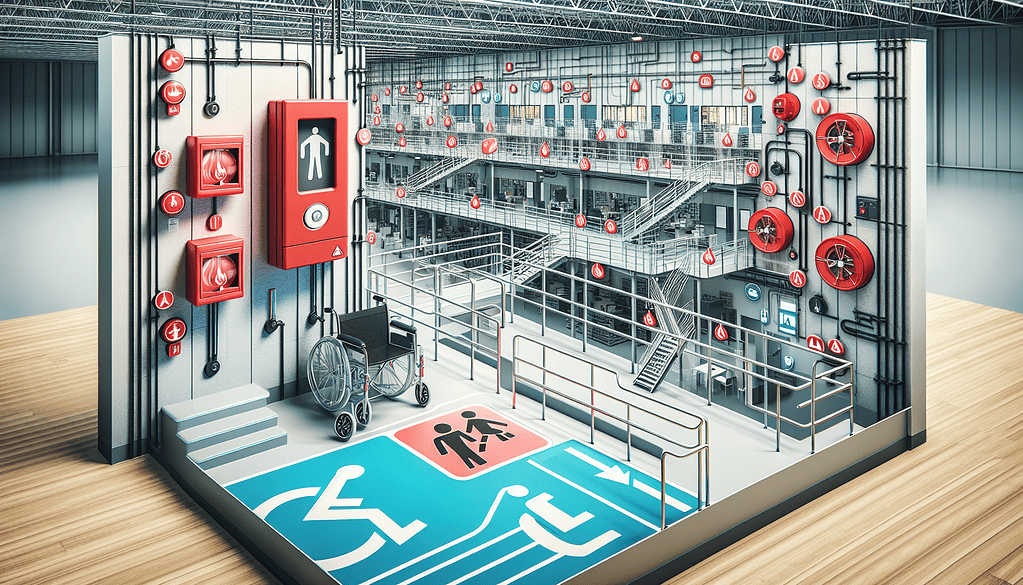
Regular inspections conducted by committee members with diverse perspectives lead to a more comprehensive understanding of potential hazards throughout the warehouse.
This allows for proactive mitigation strategies to be implemented before incidents occur. For example, the committee might identify a poorly lit area and recommend installing additional lighting to prevent slips and falls.
Enhanced Communication and Collaboration
The commitment between management and employees fosters open communication about safety concerns. Employees feel comfortable bringing forward issues without fear of reprisal, and management gains valuable insights from the front-line perspective.
This collaborative environment allows for better decision-making regarding safety protocols and procedures.
Reduced Workplace Injuries and Accidents
By proactively identifying and mitigating hazards, promoting safe work practices, and fostering a culture of safety awareness, the committee ultimately significantly reduces workplace injuries and accidents, ensuring optimal workplace safety and minimal operational disruption.
This translates into a safer work environment for everyone, lower worker’s compensation costs for the company, and less disruption to warehouse operations.
Pro Tip: What do you think about safety accountability? Sometimes when creating a safe culture, you have to make sure those not onboard are held accountable. Unsafe acts, with or without injury, will be next-level discipline up to and including.
Positive Impact on Employee Morale and Productivity
When employees feel safe and valued by their employer’s commitment to safety, morale improves. They are more likely to be focused efficiently when performing their task entry. This translates into increased productivity and a more positive overall work environment.
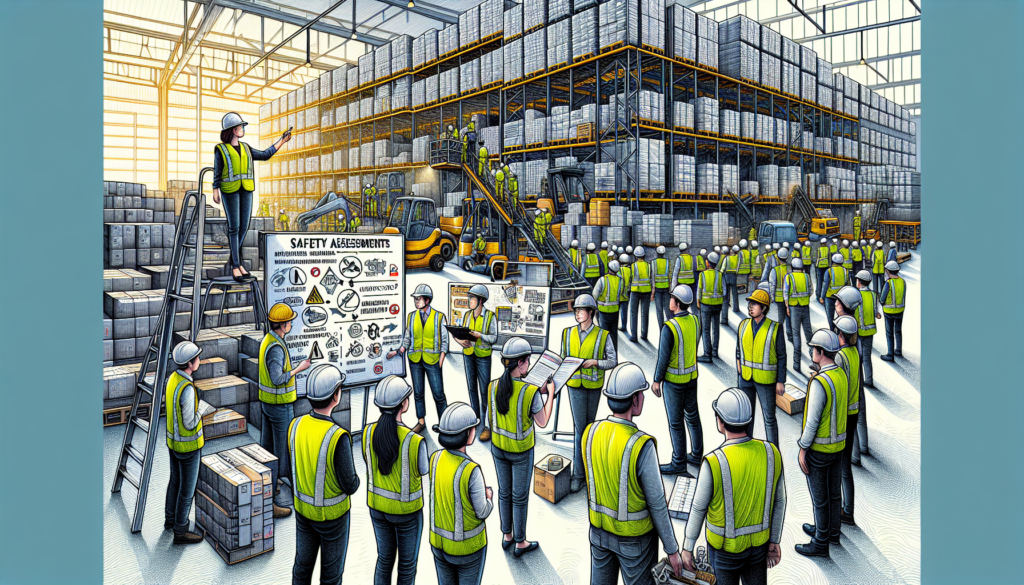
Conclusion
Building and maintaining a strong safety committee with clear safety policies is an investment in your warehouse’s most valuable asset—its employees. Following the outlined steps and fostering a safe culture through committee involvement can significantly reduce the risk of injuries, improve employee morale and productivity, and ultimately create a safer and more successful workplace.
Call to Action
Don’t wait for a serious accident to highlight the importance of safety. Take the initiative today and implement a well-structured safety committee in your warehouse. Numerous resources are available online and from safety organizations to help you get started.

